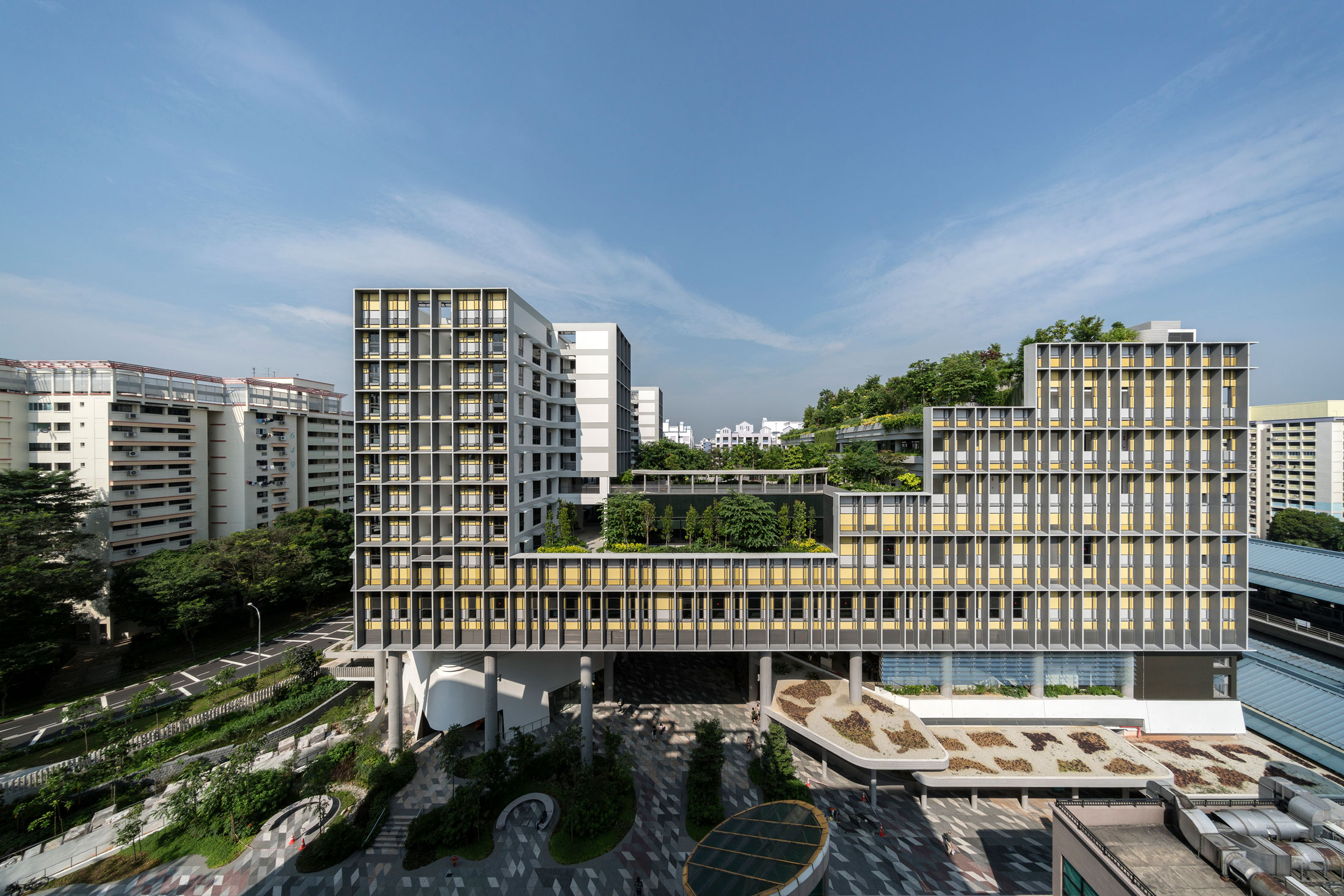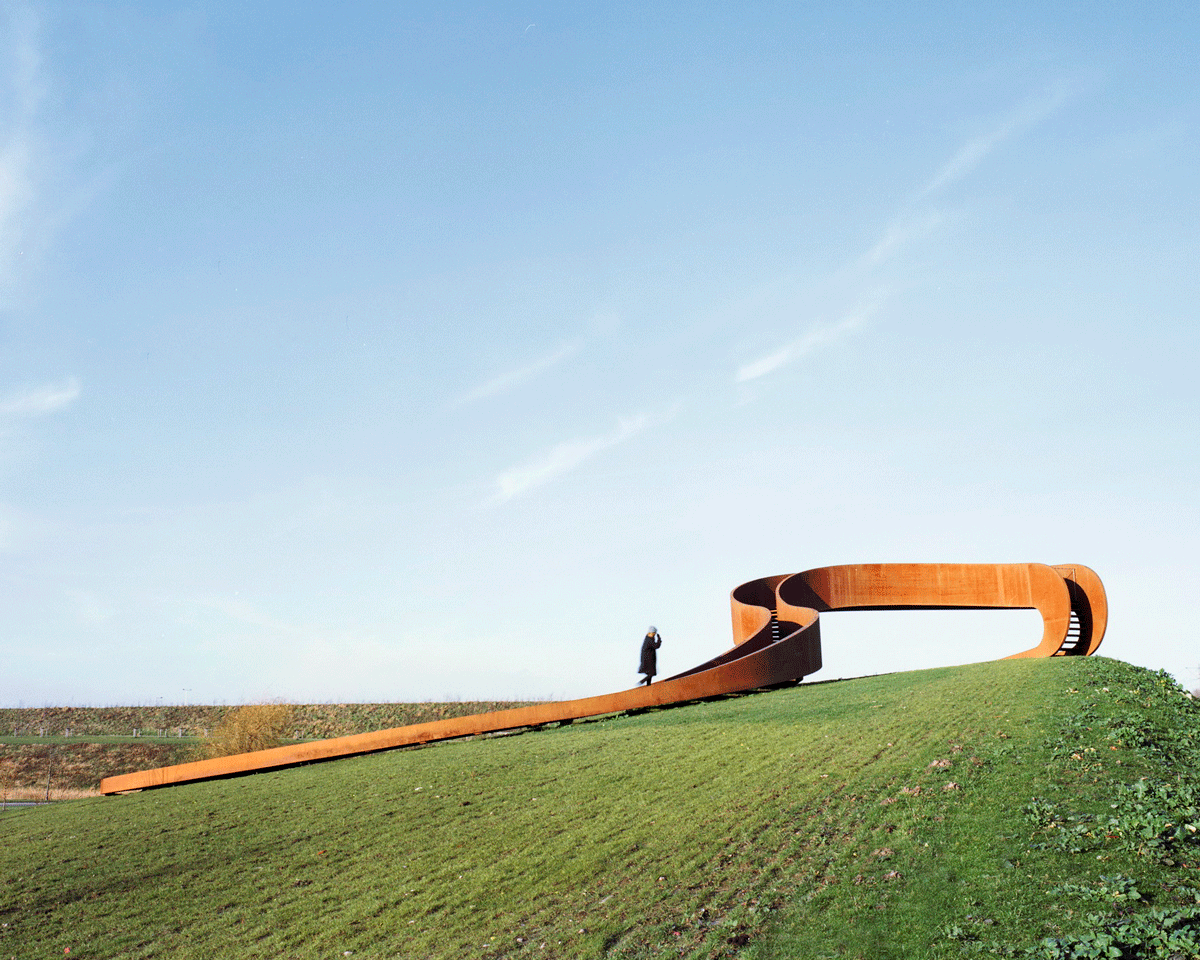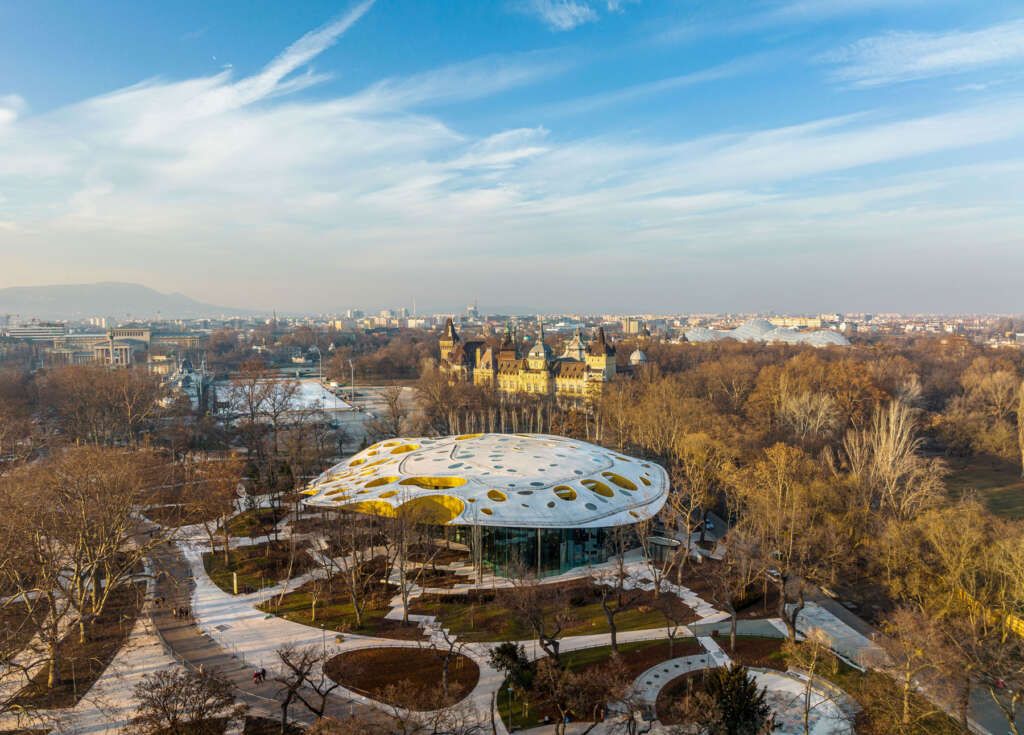
House of Music
Architect: Sou Fujimoto Architects
Location: Budapest, Hungary
Type: Cultural
Year: 2022
Photographs: Palkó György
The following description is courtesy of the architects. This January, the House of Music, Hungary will open in Budapest: a brand-new cultural landmark for the city, which is dedicated to the creation of music and sound. The House will provide a unique artistic experience combining landscape, architecture and exhibition design to offer its visitors new perspectives on music making and its impact on our lives. The ambitious architectural project is led by star Japanese designer, Sou Fujimoto Architects and is part of Europe’s largest cultural development, the Liget Budapest Project, which will transform the experience of culture in Budapest including the creation and renovation of several cultural institutions, while establishing new leisure opportunities and green areas within the city’s central City Park.
The vision for the project is to bring the experience of music to life through the interaction of nature, sound and light. Situated in Budapest, Hungary, which is a historic centre of music in Europe for both classical music repertoire and Hungarian folk traditions, the House will host a range of live music from classical to folk, pop to jazz, alongside exhibitions and education and learning programmes designed to create opportunities for anyone to play and experience music.
András Batta, Managing Director of the House of Music, Hungary and former President of Liszt Academy says: ‘Music making is at the heart of human experience. The House is a one-of-a-kind institution created to introduce the beauty of sound and music, alongside the important role it plays in every aspect of our life.’
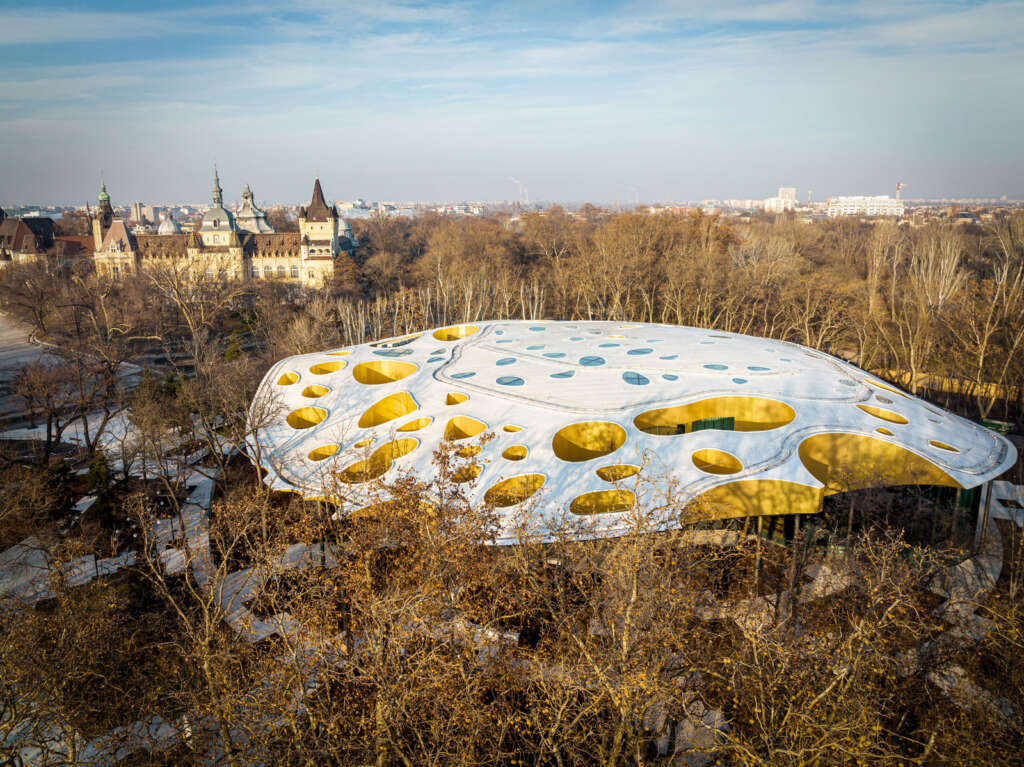

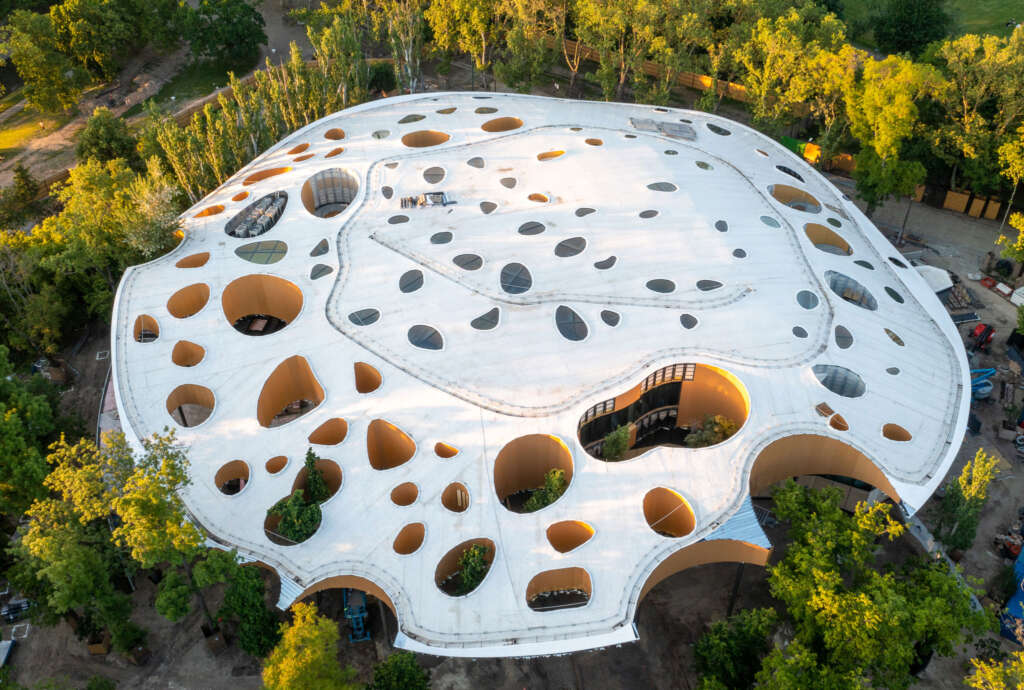
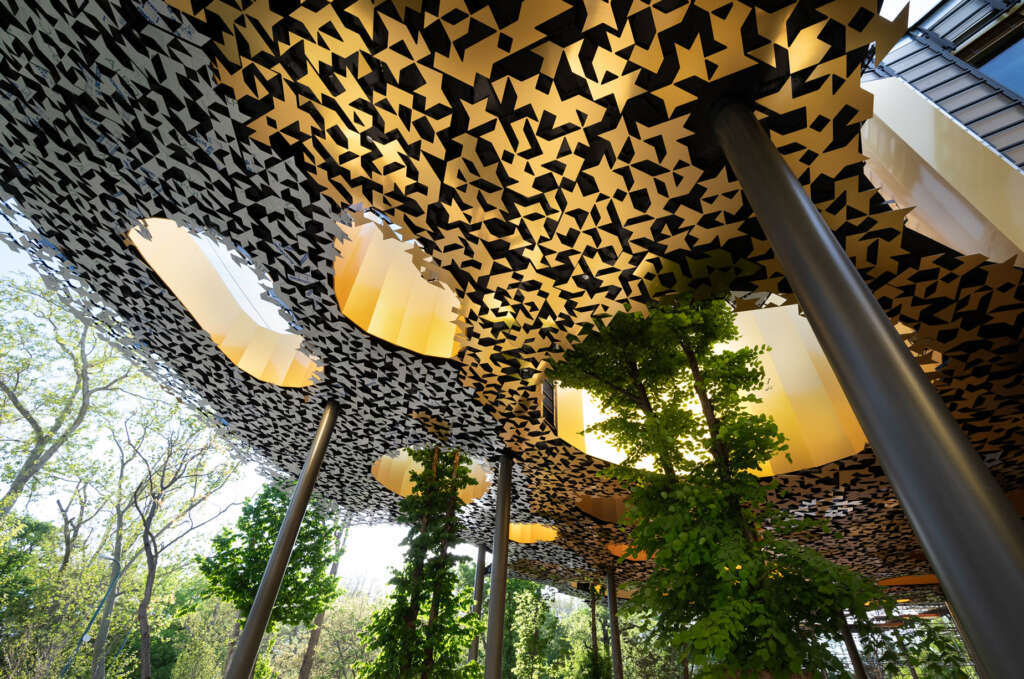
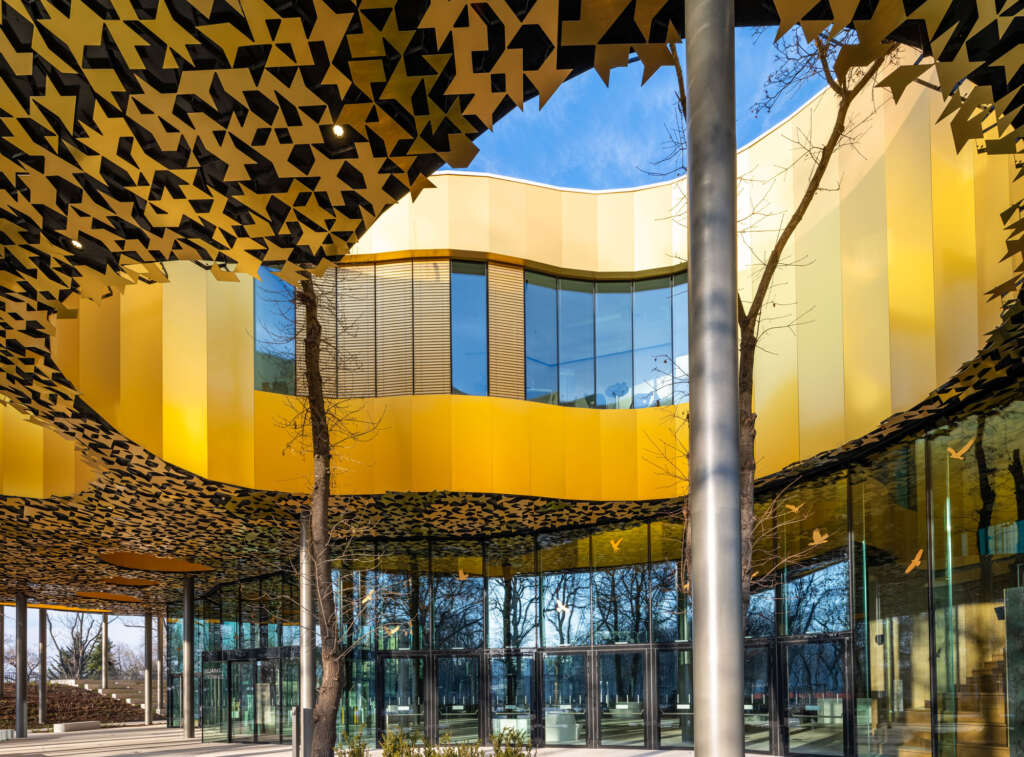
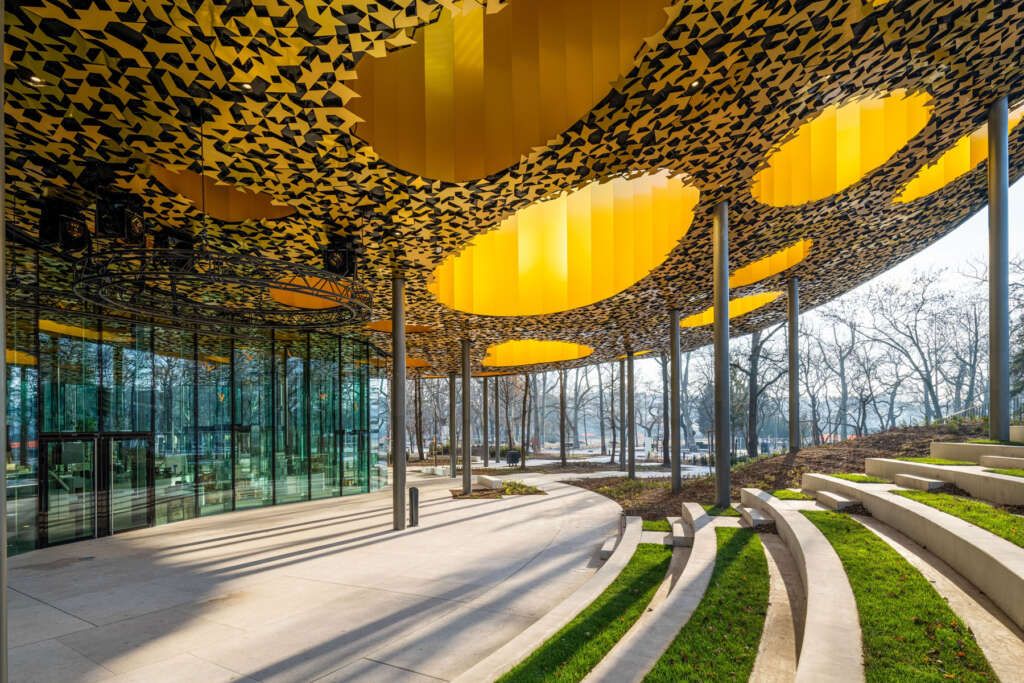
Forest of music inspired architecture
The impressive 9,000m² (total floor area) building nestled amongst the trees of the City Park, is designed by Japanese practice Sou Fujimoto Architects. The designers have taken inspiration from the synergy between sound and nature; presenting the building as a continuation of its park context and an ambitious rethinking of a 21st century museum space. The House’s facade is panelled in a curtain of glass to create a completely translucent building that blurs boundaries between indoor and outdoor space. The glass facade is made up of 94 custom-manufactured, heat-insulated, horizontally undivided panels and its height reaches almost 12 metres in some areas of the House.
Consistent with its naturalistic setting, the House is equipped with an innovative heating and cooling system; mainly geothermal energy and other renewable sources covering the House’s energy requirements.
The feeling of being in nature is further enhanced by a canopy of over 30,000 decorative tree leaves set in the suspended ceiling and secured in place by a steel structure made out of 1,000 honeycomb-shaped elements. The building’s unique roof structure is also inspired by the varying form of sound waves. The vast undulating roof structure changes depth and remains below the City Park’s foliage. The roof has been designed with nearly 100 unique, crater-like holes in the surface, which allow the trees to slip through whilst channelling light into the depths of the building, lighting the interiors and creating a special atmosphere, as if visitors are walking under the trees.
Sou Fujimoto, lead architect, says: “We were enchanted by the multitude of trees in the City Park and inspired by the space created by them. Whilst the thick and rich canopy covers and protects its surroundings, it also allows the sun’s rays to reach the ground. I envisaged the open floor plan, where boundaries between inside and outside blur, as a continuation of the natural environment.”
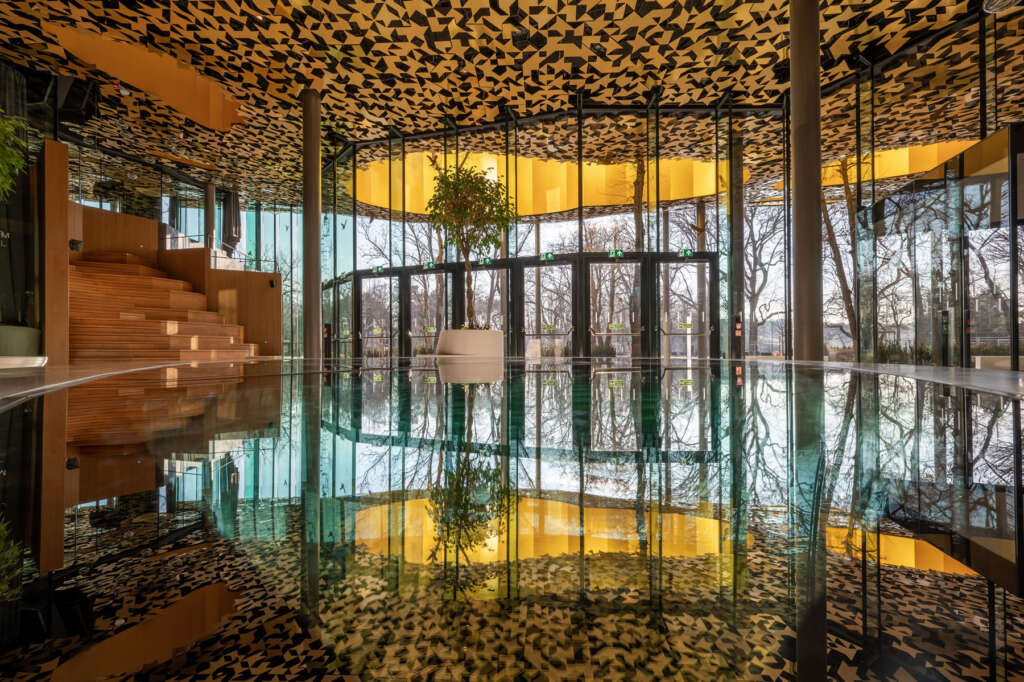
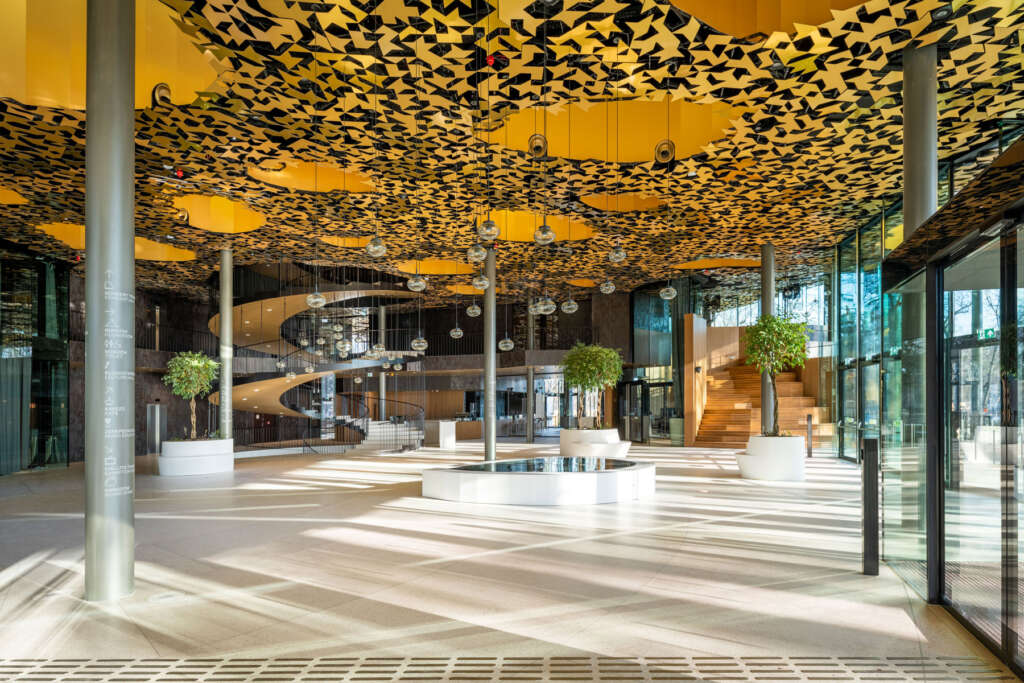
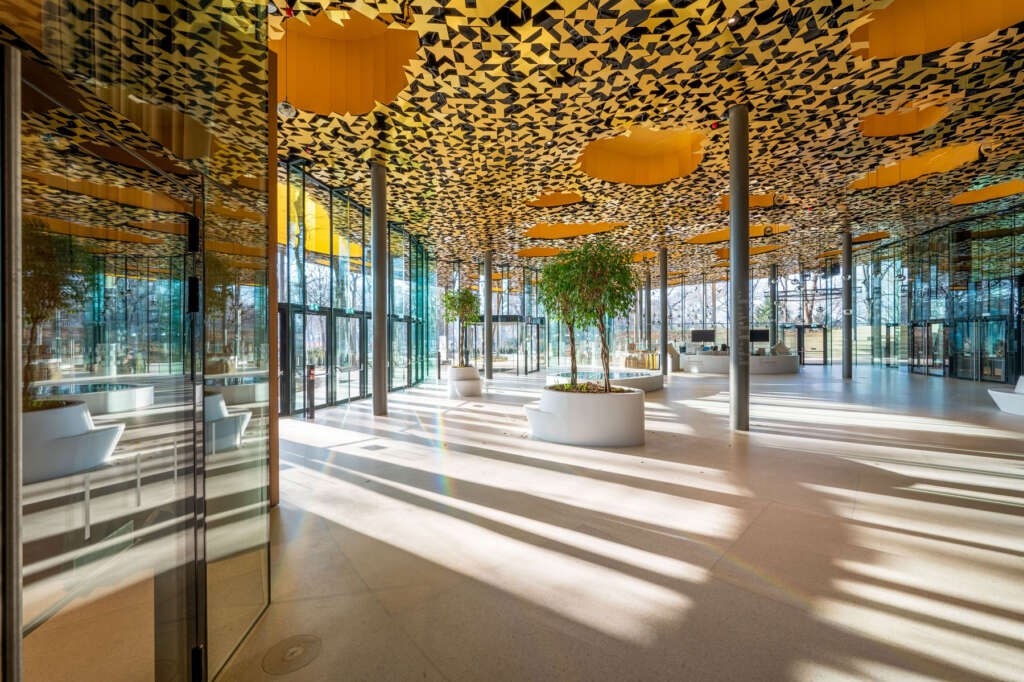
Movement of a score: exhibition and education spaces
The layout of the House is set across three distinctive levels reflecting the three movements of a musical score and interweaving nature and music. The subterranean level will provide a space for permanent and temporary exhibitions and a unique sound dome, the park level will be home to the glass-walled concert hall and open-air stage and the top level will be dedicated to educational spaces.
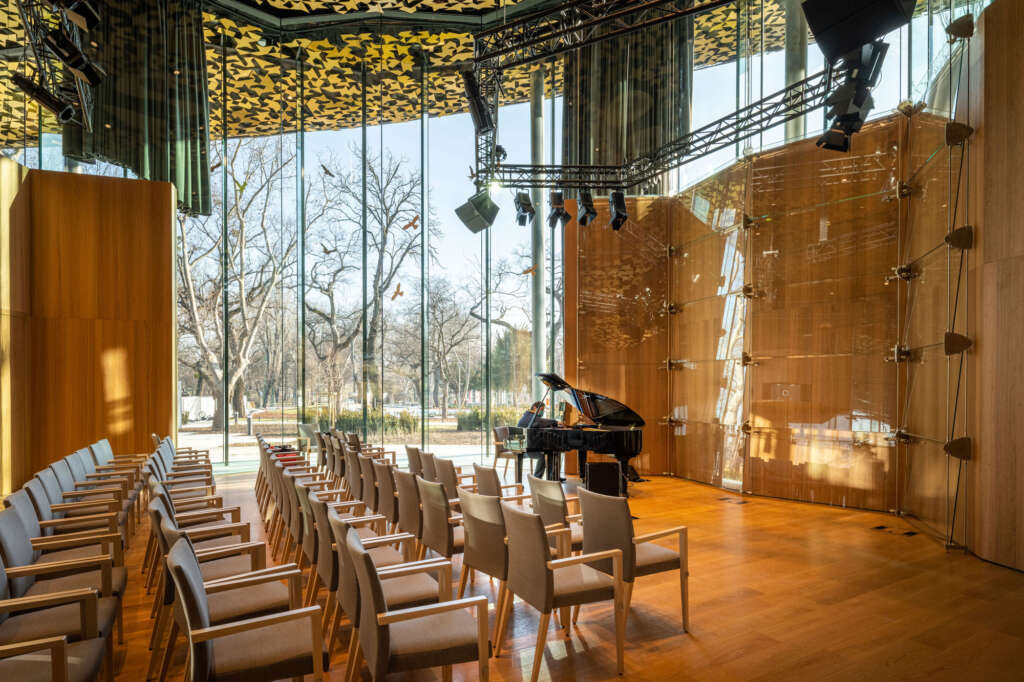
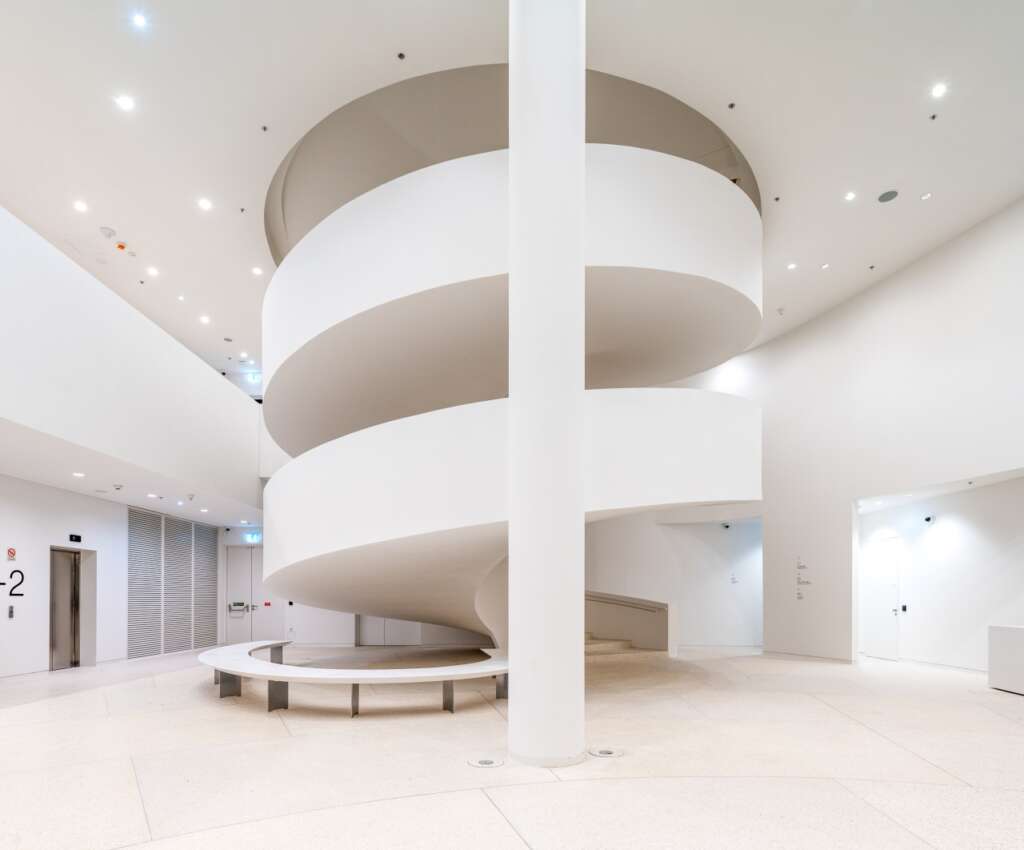
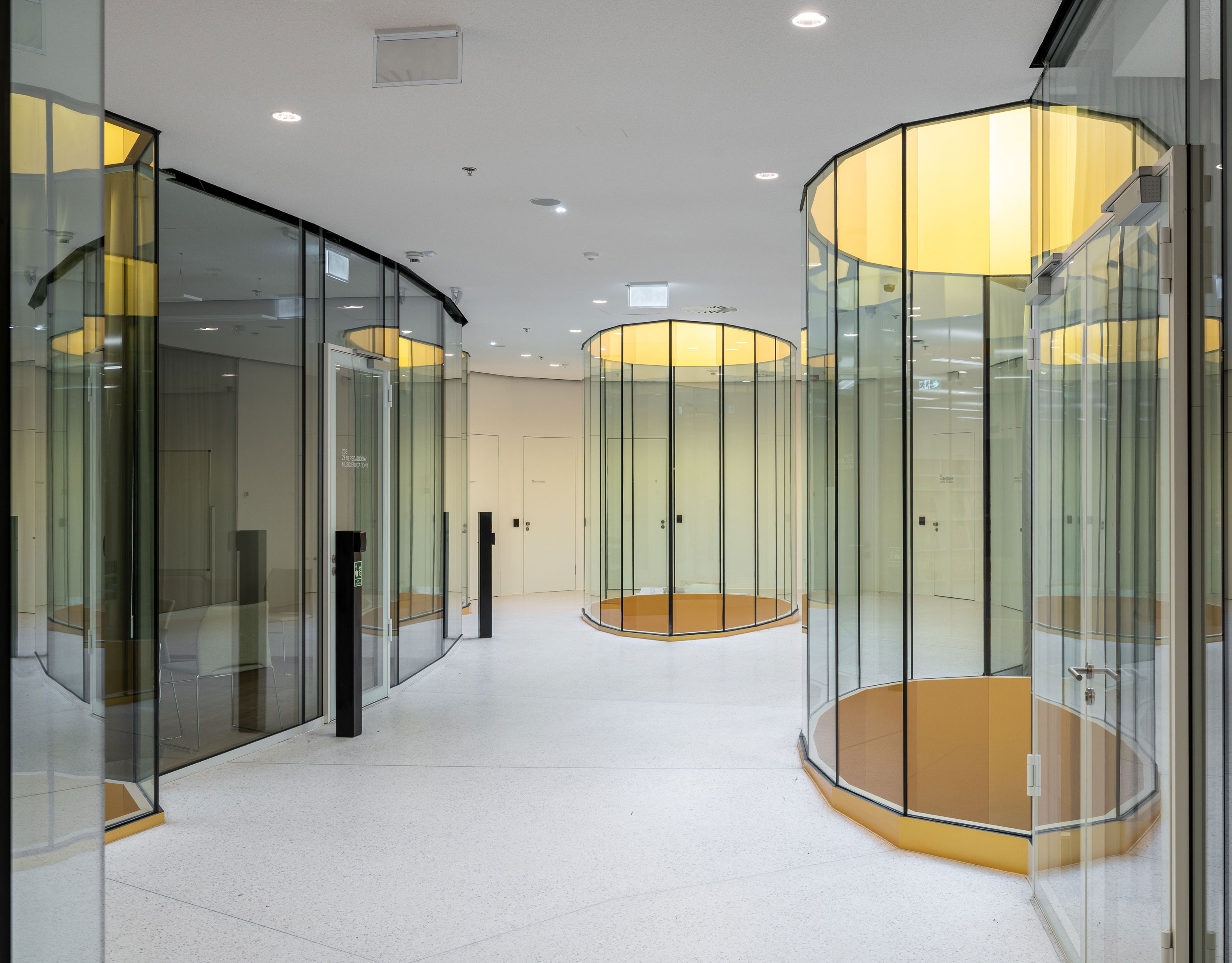
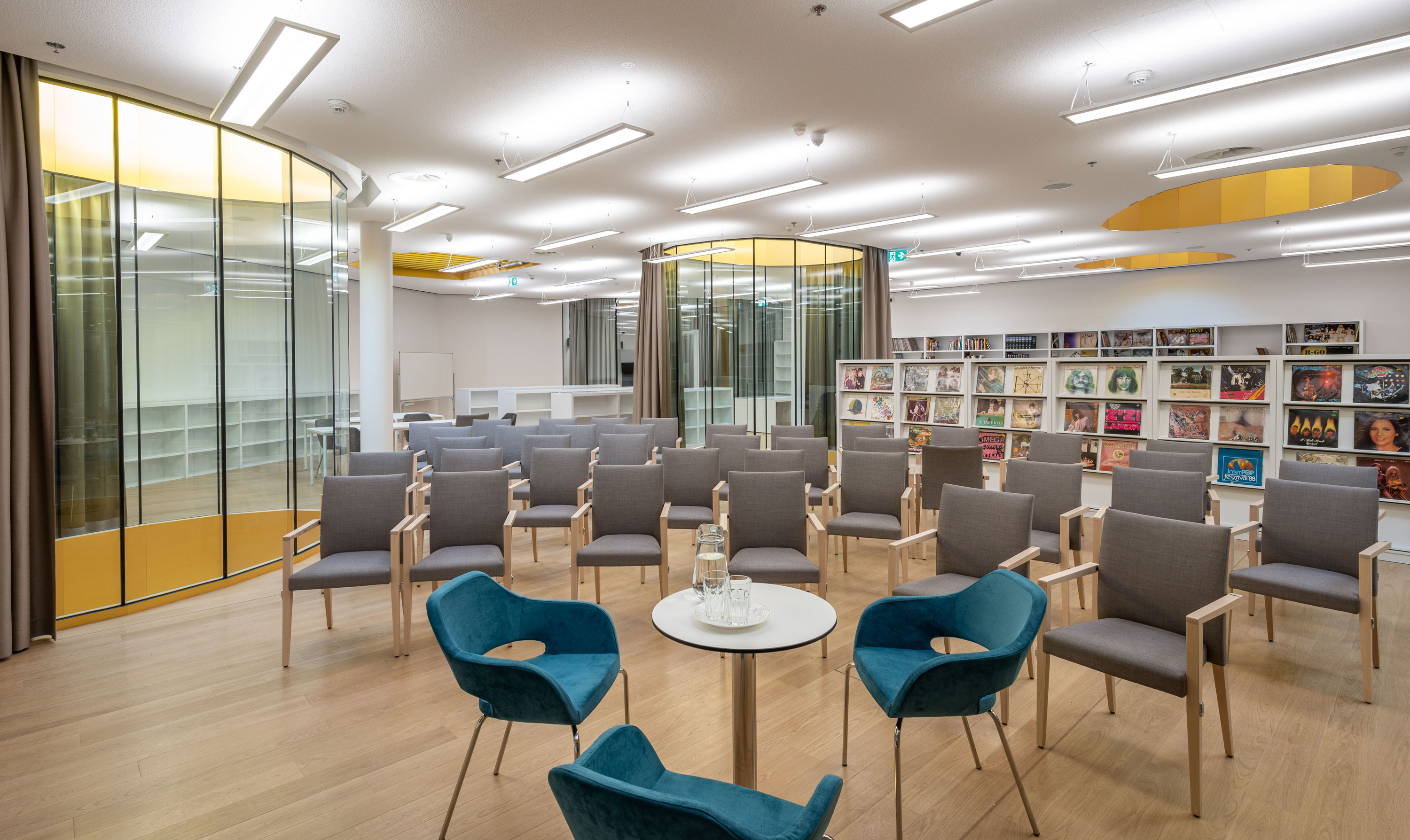
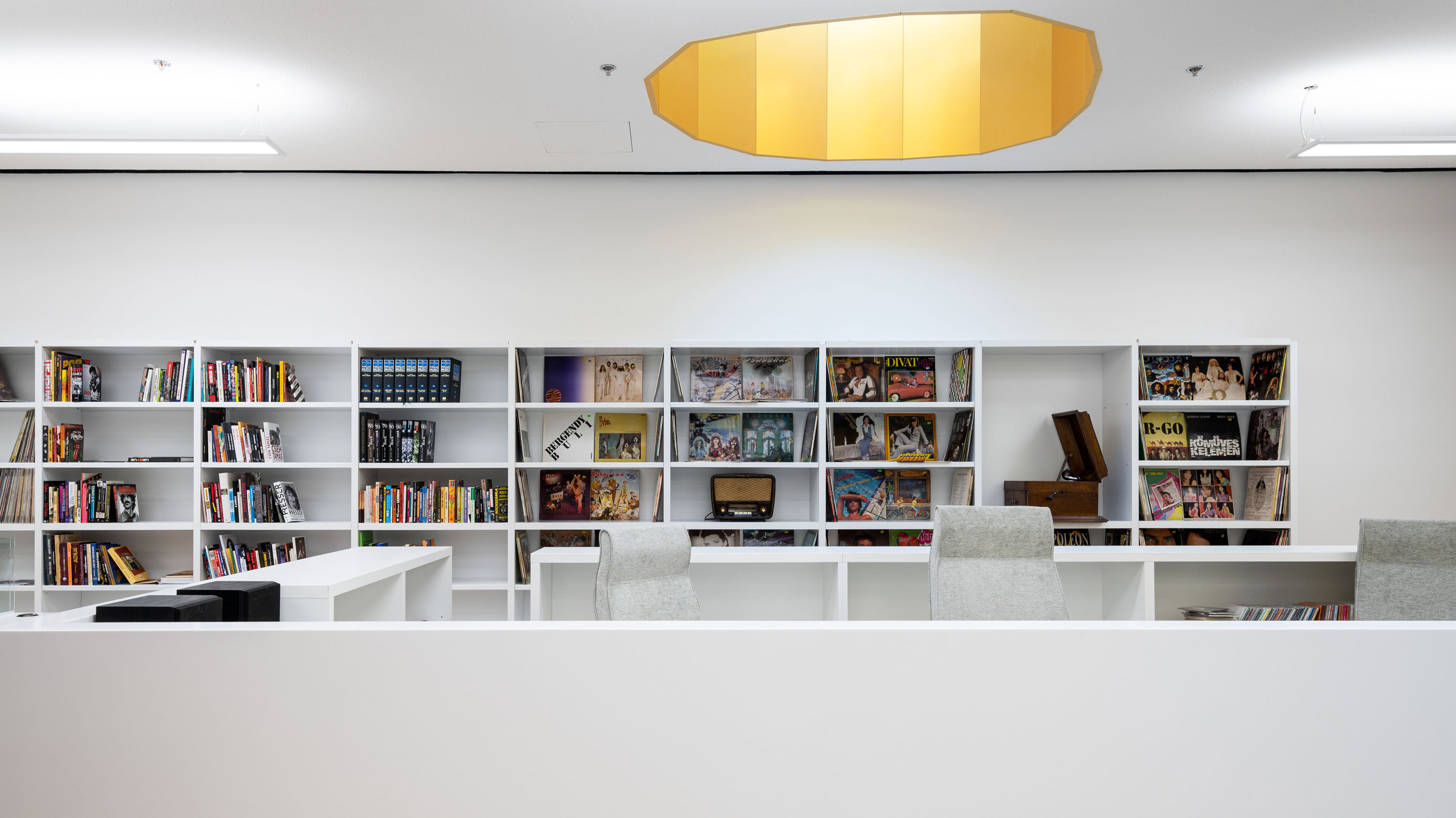
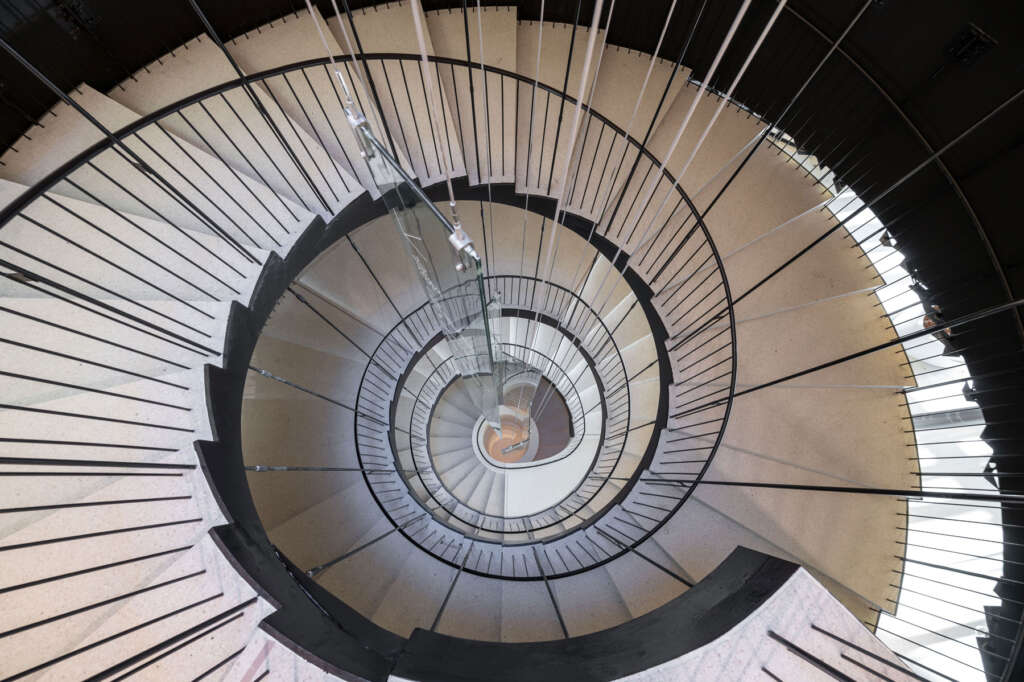
Unique sound dome
One of the most notable features of the House – regarded as a rarity across the globe – is the hemispherical sound dome. The concept was inspired by the 20th century composer, Karlheinz Stockhausen, who created the first 3D aural experience in the form of a spherical concert hall, which debuted at the 1970 World Exposition in Osaka, Japan. Designed as a fully immersive experience, up to 60 visitors can be accommodated to experience 360 degree surround sound emitted from every direction from more than 31 loudspeakers, creating ‘hologram-like’ walls of sound. Enhanced visually by a projector, during the day visitors can experience the permanent sound installation composed of sounds of Hungary and from the Carpathian Basin. In the evenings, the dome will act as a venue for DJ sets, screenings and smaller-scale
concerts.
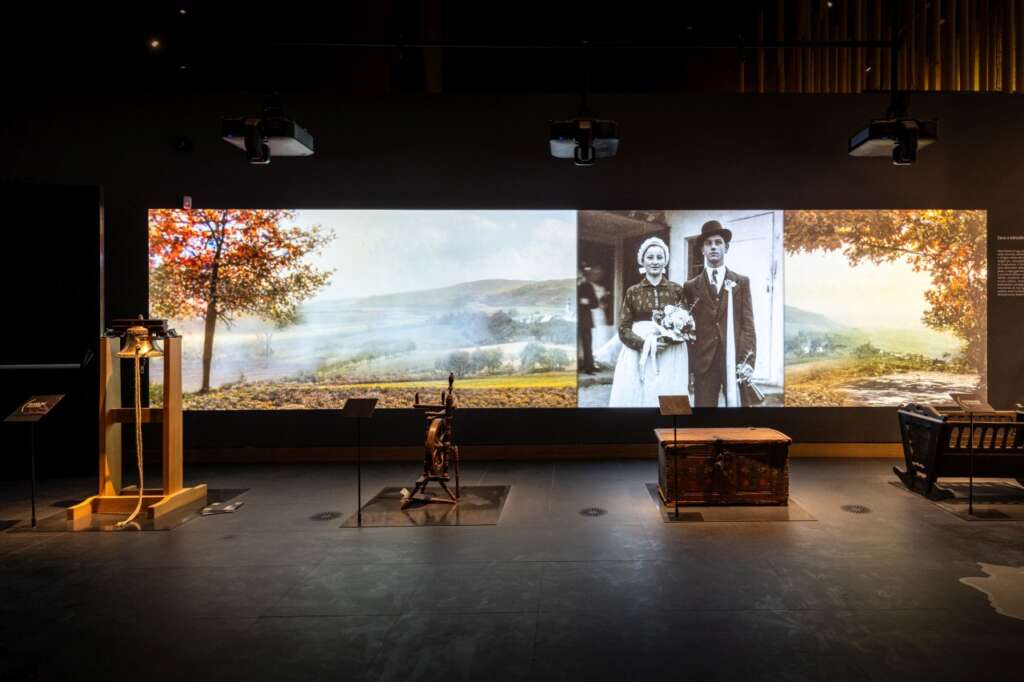
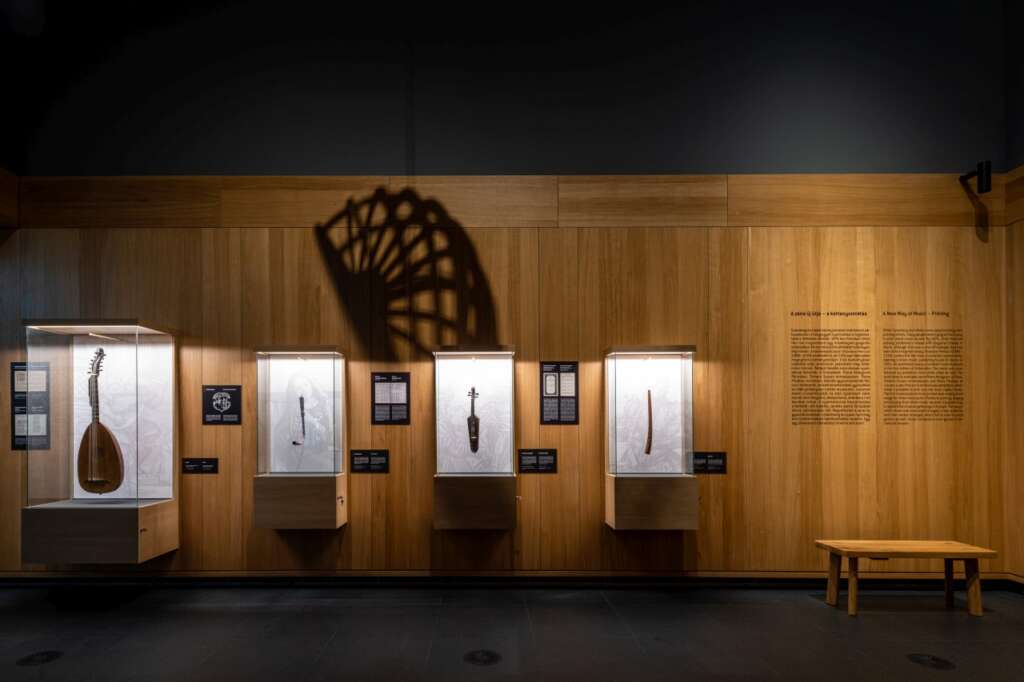
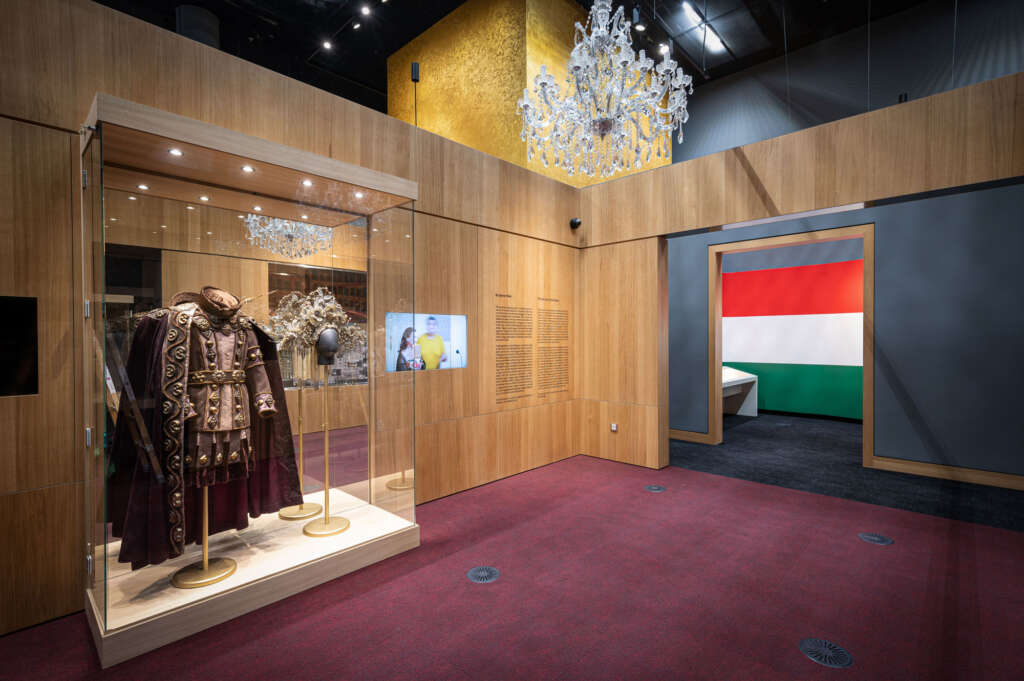
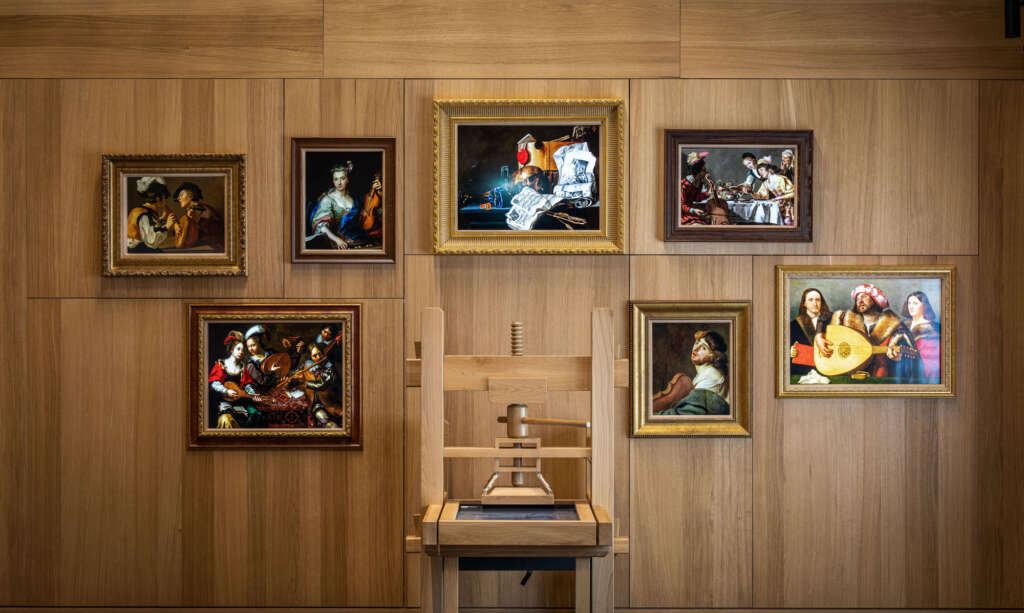
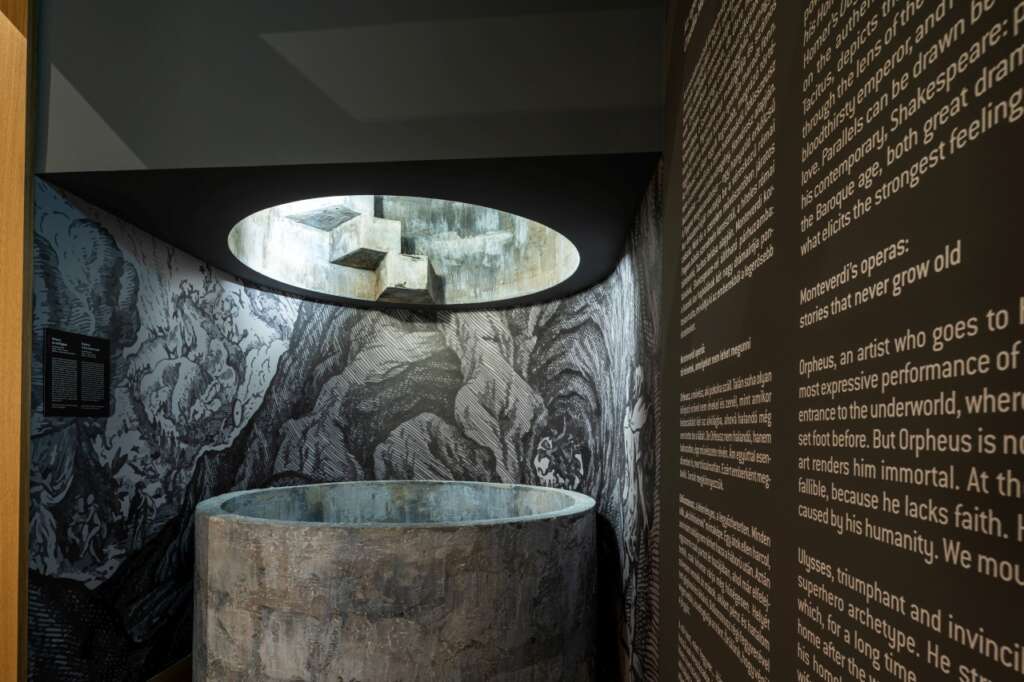
Permanent exhibition ‘Sound Dimensions – Musical Journeys in Space and Time’
The institution brings Hungary’s rich music traditions and landmark role in the history of European music to domestic and foreign visitors alike with its interactive exhibitions, both permanent and temporary, utilising 21st-century technology, music education workshops as well as music events and open-air concerts.
The permanent exhibition, titled ‘Sound Dimensions – Musical Journeys in Space and Time’, will provide an immersive musical journey through two thousand years of music making in Europe – from the musical exploits of primeval man, the historic turning points in music’s history such as musical notation and polyphony, to the wide spectrum of avant garde and popular music driven by the technological revolution of the 20th and 21st centuries. Through six main themes, visitors will discover the contrasting sounds and styles of each era through the life and work of iconic composers including Monteverdi, Mozart, Bach, Beethoven and Liszt. The audio-visual experience of the show will be accompanied by an instrument lab and a plethora of sounds which can be heard within the sound dome. The first temporary exhibition
will showcase the history of Hungarian pop music from 1957-1990, with a focus on the performers and music scene of the Socialist – so called Kádár – era.
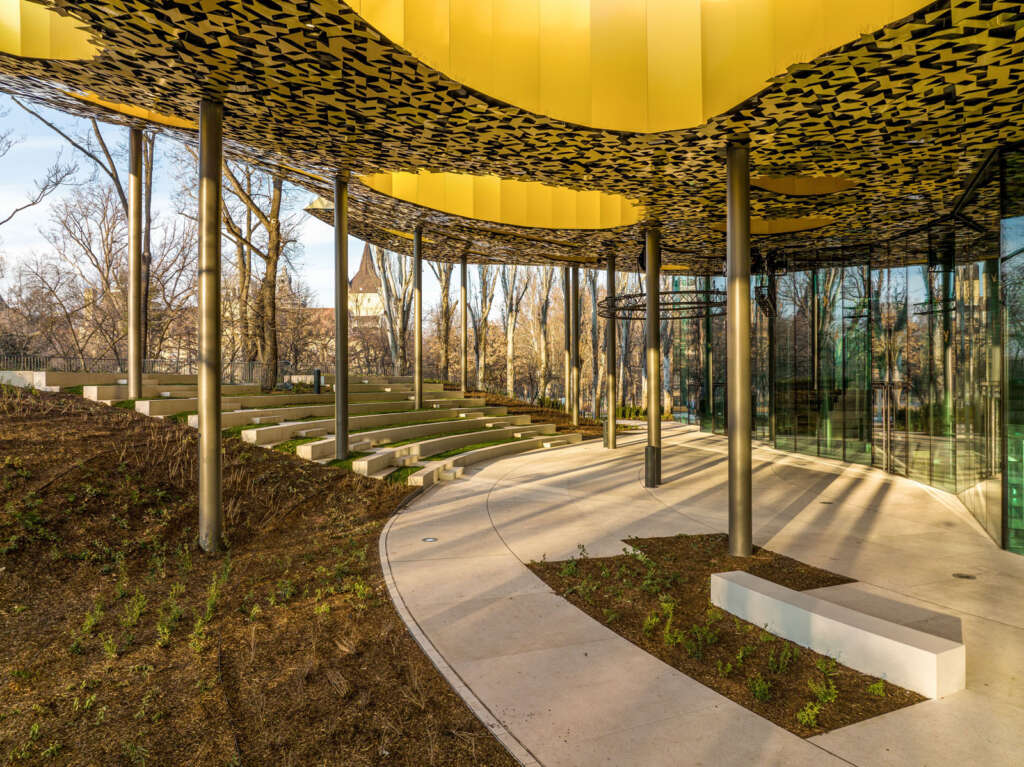
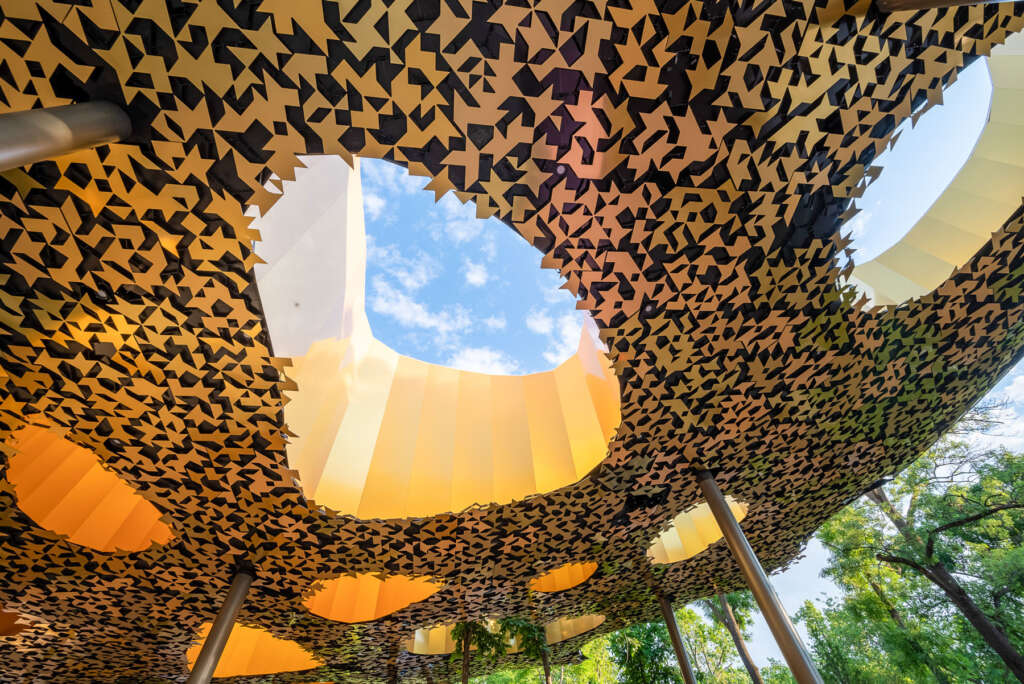
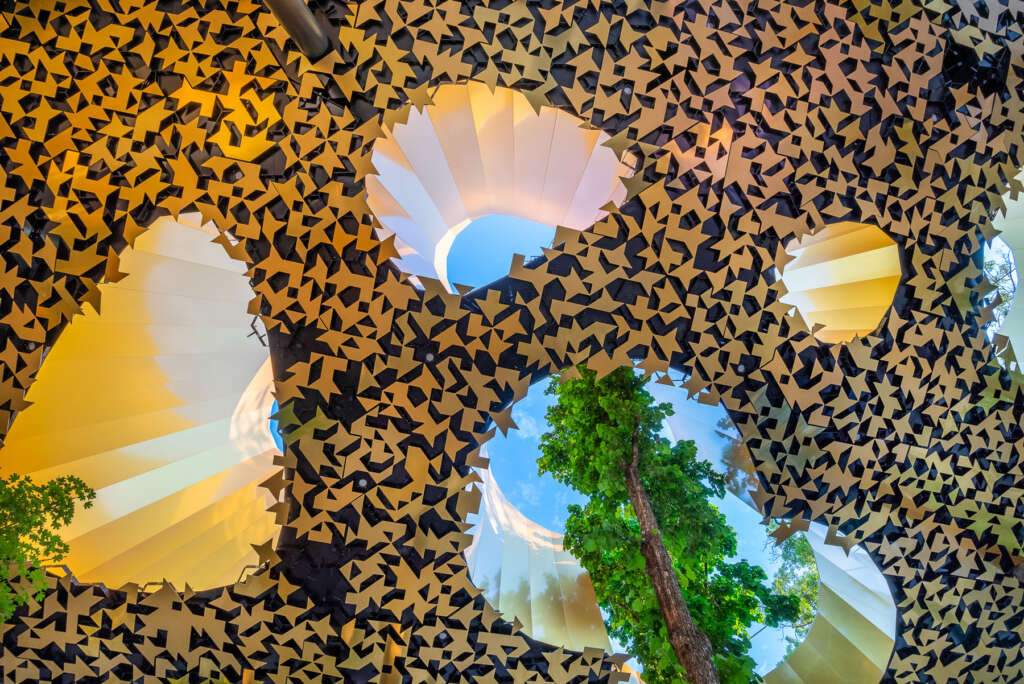
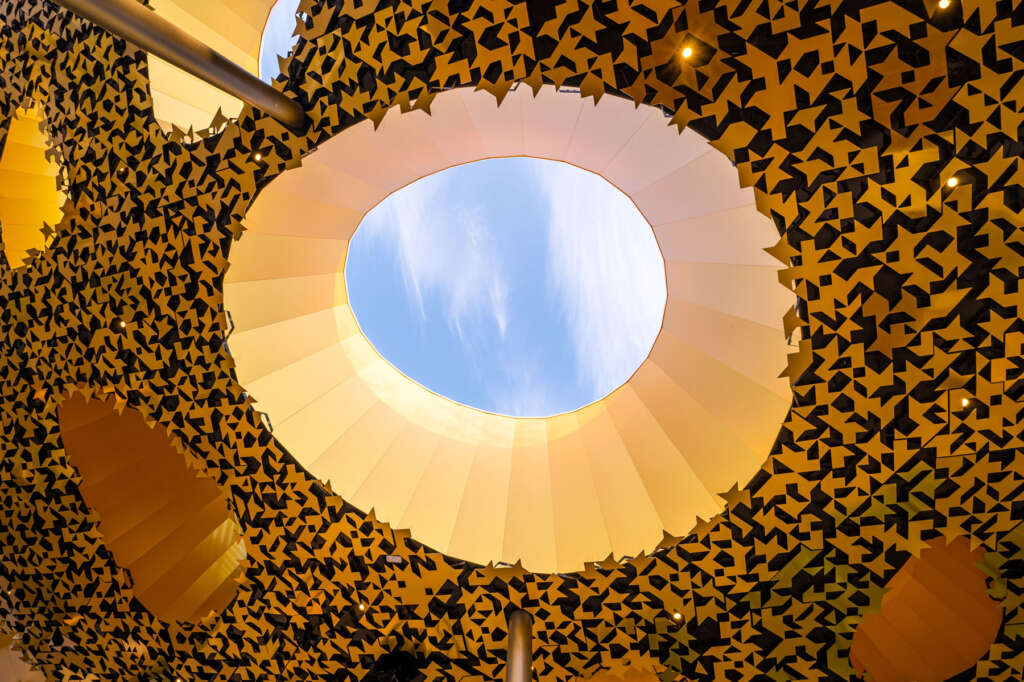
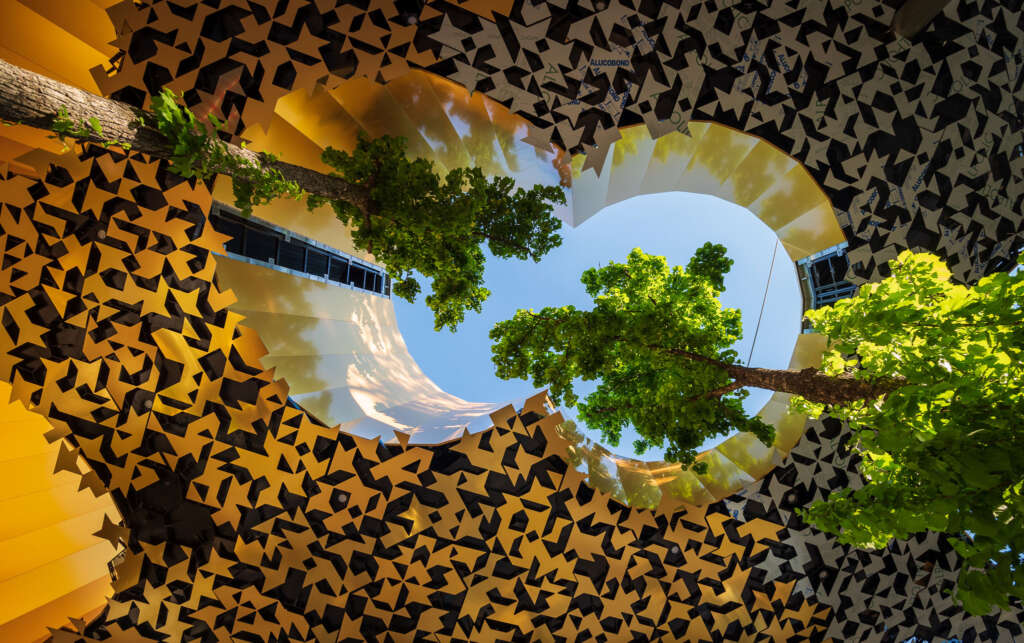
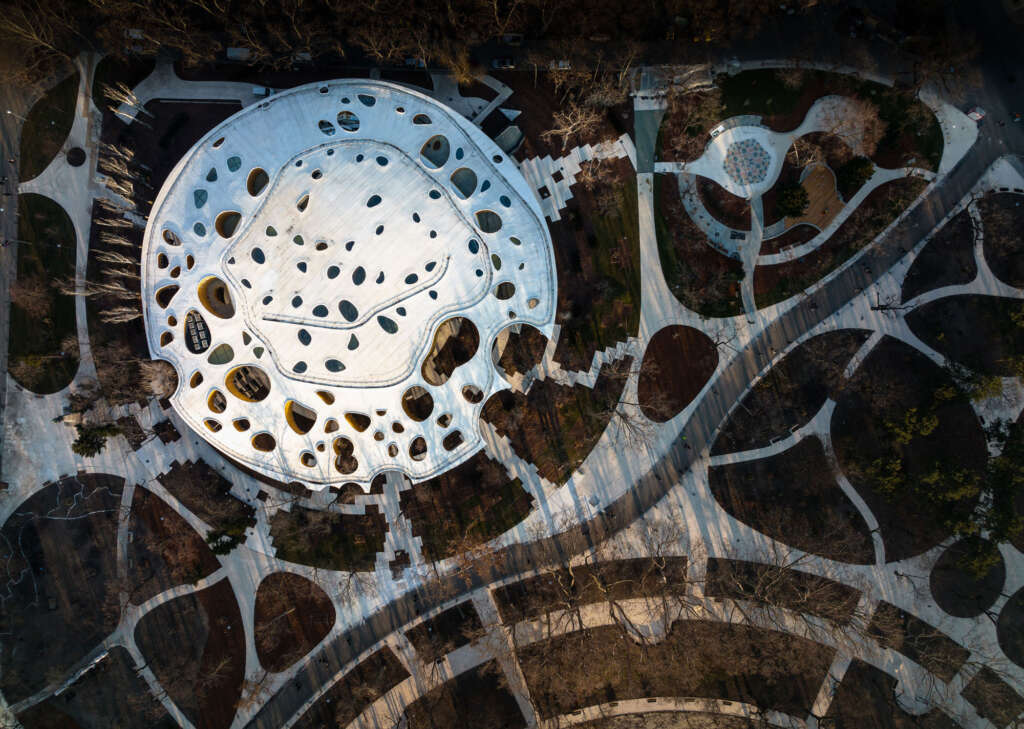
Concert spaces
At the park level, the ground floor houses two indoor concert halls; the smaller hall primarily functions as a lecture and workshop space, alongside acting as a concert venue and an auditorium. The open-air stage located on the level of the building’s entrance will host daytime and evening concert events, allowing visitors sitting on the hillside opposite the stage and in the adjacent garden terrace to observe. The glass-walled concert hall has a capacity of 320 seats and is equipped with a sinkable stage and suitable for musical experimentation.
Undertaken by Japanese firm Nagata Acoustics, known for the acoustic design of the Walt Disney Concert Hall, Los Angeles, and Elbphilharmonie, Hamburg, Nagata and Sou Fujimoto navigated the challenges of this unique glass design by creating a zigzag-shaped wall that allows incoming sound to reverberate and disperse from the glass indirectly, producing homogeneous sound.

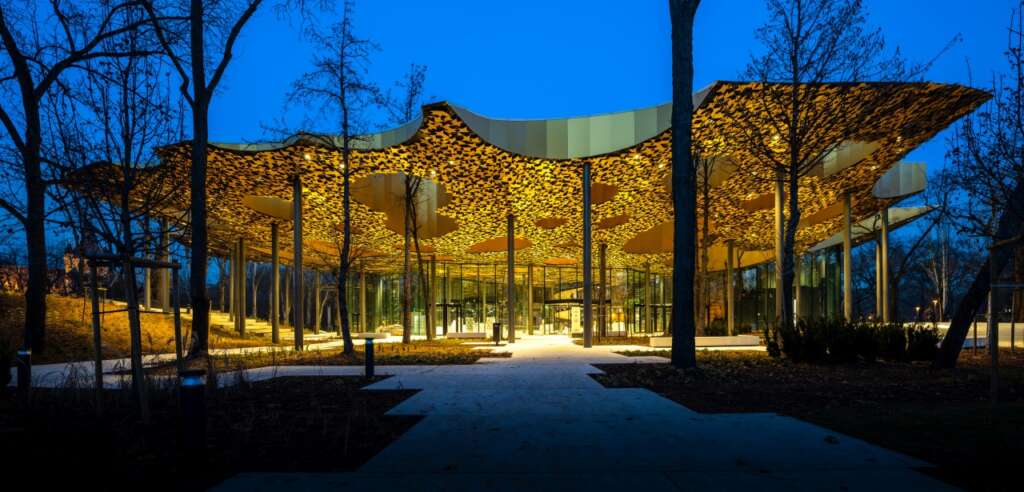
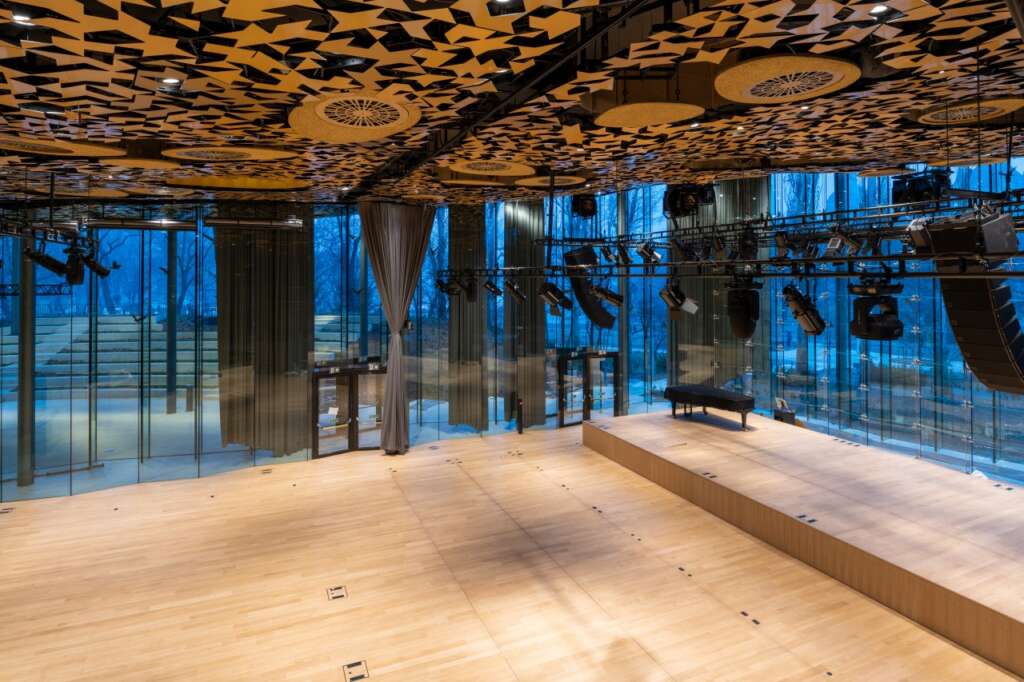
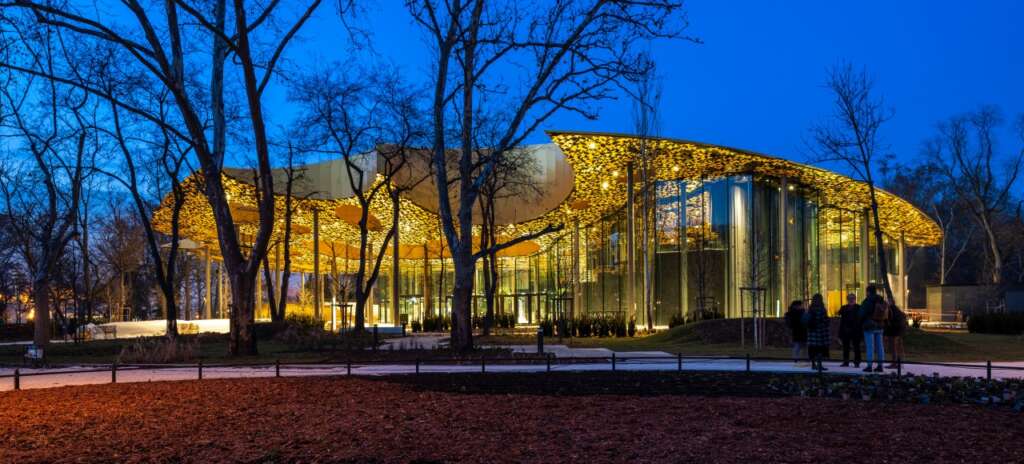
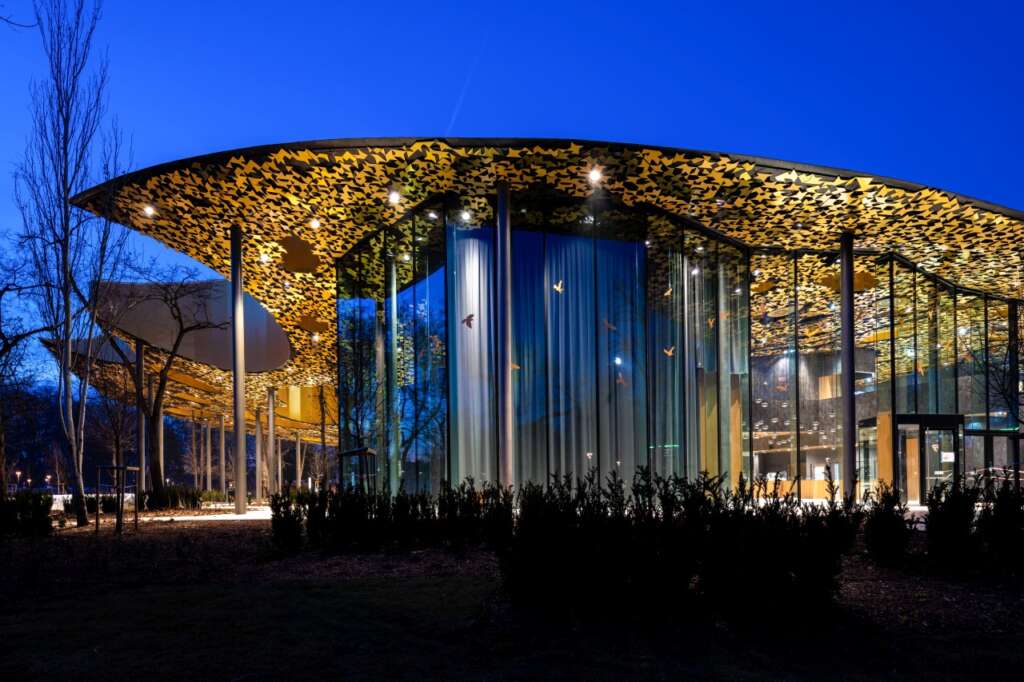
Music education is another important part of the House’s mission to support and enhance learning. The Multimedia Library and Club will house a large number of important written, audio, visual and film documentation on the history of Hungarian music for researchers and those interested in music to discover. Inspired by the philosophy of Hungarian music psychologist Klára Kokas and composer Zoltán Kodály, the House will also offer music education, workshops for schools and groups of children, alongside an open university programme of courses and short lectures in which all three functions of the institution play their part: teaching, exhibition discovery and collaborating in a concert hall workshop.
The January to June 2022 programme encompasses the overall philosophy of the House: building connections, promoting young talent and discovering sound experiences. Among some of the most exciting programmes is Bartók 1914, which celebrates the work of Béla Bartók, regarded as one of Hungary’s greatest composers. The host band of the concert is the Magos ensemble, focusing on the folk music of the region, and special guests include Transylvanian musicians, Ágnes Langer and Balázs Fülei. Making her Hungarian debut, the Greek singer and songwriter Marina Satti will be performing her signature blend of Greek traditional music and contemporary sounds. German computer music artist and co-creator of the music software Ableton Live, Robert Henke will be performing a special show live using only Commodore CBM 8032 computers from the early 1980s. Former lead singer of the band The Czars, John Grant and Grammy award winner Aoife O’Donovan will both showcase their latest solo records, playing in Hungary for the first time. Traditional tuvan band Huun-Huur-Tu will create a unique show, especially put together for the House of Music, in collaboration with the Hungarian band Kerekes, combining folk music of both nations. More information about the 2022 programme of events, exhibitions and workshops at the House of Music can be found on their channels.


